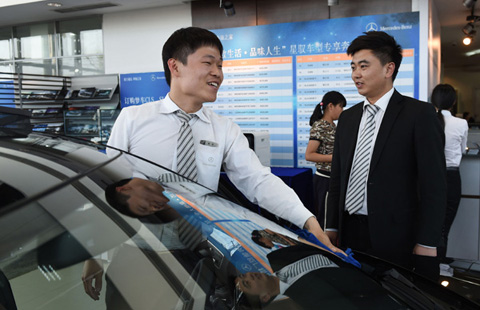Partnership drives Silk Road strategy
By KAMEL MELLAHI (China Daily) Updated: 2015-05-25 10:42After repeated delays and false starts, the long-awaited China Pakistan Economic Corridor project is finally happening.
The $47 billion project is a significant turning point in the Silk Road strategy. The strategy is finally entering the implementation phase with new challenges and opportunities ahead.
It is now a good time to look back and take stock of what has been achieved so far, and more importantly how it has been achieved.
I think the biggest achievement to this point is the immense support and endorsement the strategy has received from stakeholders. The strategy would not have been possible without this support. This success is underpinned by an ethos of partnership and collaboration between China and other countries along the Silk Road Economic Belt proposed by Chinese President Xi Jinping. This ethos must remain the guiding principle.
When the Silk Road strategy was first launched in September 2013, there was a lot of skepticism, particularly in the West, about whether it would actually come off. Critics and doubters lamented the lack of details, availability of necessary resources and capabilities in order to question the feasibility of the strategy.
Criticism of the Silk Road strategy has been harder to fathom. Like many neutral observers, I have been saying for a while that the critics would be proved wrong-and that has happened.
Most of the doubters had a blinkered view of the strategy, and as a result their objections and warnings were vastly misguided. Their underlying presumption that this is a China project is proving shaky. China has taken deliberate steps through multilateral institutions, such as the newly created Asian Infrastructure Investment Bank, to reduce, not strengthen, its perceived power and influence.
Plus, the bank is positioned to complement rather than substitute for existing institutions. The Silk Road strategy needs a financing institution to help support the enormous construction projects. Asian infrastructure needs are estimated at $720 billion annually until 2020.
Indonesia alone requires about half a trillion dollars to modernize its infrastructure. These are enormous investments far beyond the capacity of existing institutions such as the World Bank and Asian Development Bank. The launch of the AIIB-with an initial equity of $50 billion-makes perfect sense. This perhaps is why a significant number of Western countries and global institutions that initially dithered about supporting the Silk Road initiative have recently flocked to join and enthusiastically endorse the bank.
What have we learned so far? China must continue to drive and throw her weight behind the strategy. But for the project to succeed, China cannot and should not go it alone. Clearly, China needs involved partners. I think that one of the reasons the strategy is holding such a great amount of appeal for Central Asian countries, and others along the Silk Road, is because it is viewed as a multilateral strategy. It is essential that concerned countries see themselves as partners, rather than mere consumers of the strategy.
But obtaining support and legitimacy is only the first hurdle-a very important hurdle, but just the first. Putting the strategy into practice is a significantly more challenging hurdle. When it comes to execution of the projects on the ground, it's no longer sufficient to gain support from national and transnational institutions. The range of stakeholders is much broader. Before designing a project in a specific region or country, genuine consultations must be held with local stakeholders.
The projects should be grounded in local people's needs and expectations. This is important because the strategy could have devastating unintended consequences if it produced marginalized communities at the peripheries. There is a lot of talk about grandiose projects and the various economic corridors for well-documented reasons.
But connectivity within countries is just as important if communities outside the economic "corridors" are not to be left behind. This is because economic activities tend to cluster around regions with highly developed infrastructure.
If one is not careful, besides turbocharging the economies of the region, the network of roads, railways, airports and ports may also turn into massive suction machines draining economic life out of regions left behind, leaving them worse off. If people feel that the improved infrastructure is not serving them, one would expect a pushback against the strategy.
The spirit of partnership and collaboration has been central to the success the Silk Road strategy has enjoyed so far. It will play an even bigger role in the years to come. It should not only continue, it should be stepped up.
The author is a professor of strategic management at Warwick Business School. The views do not necessarily reflect those of China Daily.
- Ironies abound in housing market
- China's Silk Road crucial for Italian tourism: official
- Lock-up shares worth 58.1b yuan eligible for trade
- New Volkswagen plant opens in central China
- Chinese firms leave mark on Kenya expos
- China crude oil output rises 1.6%
- Chinese premier encourages firms to upgrade cooperation with Peru
- China's P2P lenders dance with bull stock market

















